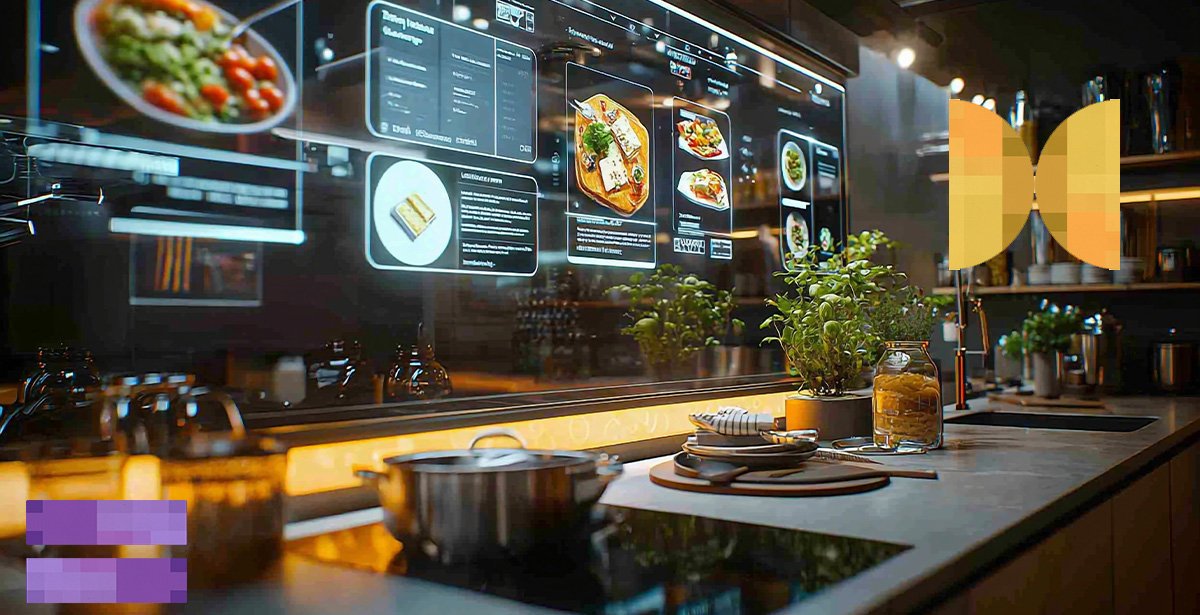8 Must-Have Restaurant Technology Integrations

The U.S. dining scene is changing fast. Customers now expect not just great food, but speed, convenience, and a personalized touch. Technology is what makes that possible.
But your goal shouldn’t be to chase every gadget that comes along. It’s to consider restaurant technology integrations that work together to make your business run smoother, respond faster, and deliver an experience customers come back for.
From mobile ordering to real-time kitchen displays, restaurants are adopting tools that connect every part of their operation.
In cities like Tampa, Florida, where the dining scene blends local flavor with tourist demand, the right systems can mean faster service, fewer mistakes, and happier customers.
The Importance of New Technology in Restaurants
Adopting new technology in restaurants isn’t just about keeping up with trends, it’s about creating tangible, measurable improvements in how you operate and serve customers.
Here are some of the biggest benefits:
- Faster Service – Digital ordering and integrated payment systems reduce wait times for guests.
- Improved Accuracy – Orders flow directly from the server or customer to the kitchen, cutting down on mistakes.
- Better Resource Management – Real-time data helps manage staffing, inventory, and supply orders more effectively.
- Higher Customer Retention – Loyalty programs and CRMs keep guests engaged with personalized offers.
- Stronger Decision-Making – Analytics reveal what’s working and what needs adjusting—based on facts, not guesswork.restaurant technology integrations
These aren’t just theoretical perks, they’re changes you can feel in day-to-day operations, especially in high-traffic environments like those in Tampa and other U.S. dining hotspots.
💡 Boost your restaurant’s growth with smart integrations. This type of integrations connects different systems like POS, reservations, and inventory. That way, they can share data seamlessly in real time. All while creating a unified workflow and reducing manual tasks. So, consider reading about smart systems integrations to find out how else can you use technology to interconnect your business ecosystem better.
Top Emerging Technologies in Restaurants
In the U.S. restaurant industry, some of the latest emerging technologiesare designed to work seamlessly together, giving owners and managers more visibility and control than ever before.
Take a look at the innovations making the biggest impact, starting with one of the most visible changes on the dining floor.
1) Portable POS Systems
Portable POS systems are changing how orders and payments happen. Instead of being tied to a single terminal, servers can take orders and process payments right at the table.
This keeps things moving during peak hours, cuts down on errors, and frees up time for better customer interaction.
In busy Tampa restaurants, handheld POS devices help staff serve both locals and tourists without long wait times.
Integrated with inventory systems, these systems automatically update stock counts and track menu performance. This combination of speed and accuracy makes them a must-have for any fast-paced dining environment.
2) Customer Relationship Management (CRM) Systems
A CRM built for restaurants goes beyond storing contact information. It tracks guest preferences, visit history, and loyalty activity, all in one place.
Large restaurant chains use CRMs to run personalized email campaigns and loyalty rewards. Meanwhile, independent restaurants use them to create small but impactful touches, like remembering a customer’s favorite wine or offering a birthday dessert.
When linked to your POS and marketing platforms, CRMs turn data into meaningful action, driving repeat visits and building lasting customer relationships. These are the kinds of restaurant technology trends that are really changing the game of personalization.
3) Analytics and Reporting Tools
Analytics platforms give operators a clear view of what’s working and what’s not. They reveal sales trends, menu performance, labor costs, and peak hours.
Many restaurants in Florida use analytics to plan staffing schedules around seasonal tourist spikes. Across the state, these tools help owners optimize menus, dropping underperforming items and highlighting bestsellers.
By using real data instead of guesswork, restaurants can make smarter decisions that improve both profitability and the guest experience.
4) Employee Management Tools
Managing staff in a busy restaurant is no easy task. Scheduling software, time-tracking apps, and training platforms help streamline the process.
In U.S. markets with high turnover, these tools make it easier to onboard new hires quickly and keep teams organized. In Tampa, where restaurants often scale up staffing during tourist season, automated scheduling helps balance labor costs while ensuring enough coverage during peak demand.
Restaurant technology integrations ensure a smoother operation and a better work environment for the people who keep the business running.
5) Kitchen Management Software
Kitchen management software connects the back of house to the front of house, ensuring every order is accurate and timely.
With this integration in place, orders move instantly from the front of house to the kitchen display system, prioritized by prep time and table. This eliminates miscommunication, reduces paper tickets, and keeps cooks, servers, and managers on the same page.
Moreover, it helps with real-time inventory updates. These, in turn, ensure that the kitchen staff is always aware of ingredient availability, while automated alerts can flag low stock or equipment issues before they disrupt service.
For busy restaurants, kitchen management software also offers data insights. It can track prep times, waste, and staff productivity. As a result, managers can make informed decisions about staffing, menu adjustments, and purchasing.
💡 Did you know that IoT is emerging technology all restaurants are using? In coastal high-volume seafood restaurants, IoT-enabled temperature sensors help maintain freshness standards. But that’s not all. Smart sensors and connected appliances can monitor equipment health, track food temperatures, automate cooking processes, and alert staff before issues arise. This way, you can reduce waste, maintain food safety, cut downtime, and keep service running smoothly even during peak hours. So, make sure to consider IoT development and how it can benefit your business.
6) Online Ordering and Delivery Integration
The rise of delivery apps has made online ordering a necessity. Integration ensures orders flow directly into the POS and kitchen systems without manual entry.
Many restaurants are now experimenting with voice ordering, letting customers place orders through smart speakers or voice assistants. In Tampa, pizza and casual dining spots are early adopters, using it to speed up ordering for repeat customers.
This technology meets modern consumers where they are, on their phones, in their cars, and increasingly, talking to smart devices.
7) AI and Machine Learning Integrations
AI in restaurants goes beyond chatbots. Machine learning can forecast demand, recommend menu items, and personalize marketing offers based on past behavior.
International chains are using AI to adjust menu pricing dynamically based on demand and ingredient availability. In Tampa, some coffee shops use AI-powered systems to predict morning rush orders, so staff can prepare in advance.
These technologies make operations more efficient while giving customers a tailored experience.
💡 Generative AI is transforming enterprise system integration! This form of AI is reshaping how restaurants operate, market, and engage with customers. Unlike traditional AI that analyzes and predicts, generative AI can design seasonal or health-focused menu variations based on customer trends, dietary preferences, and inventory availability. For marketing, it can craft targeted campaigns, social media posts, and email offers in seconds. It can even simulate new restaurant concepts or interior layouts before investing in physical changes. By combining generative AI with other smart integrations, restaurants can personalize at scale, reduce creative bottlenecks, and keep innovation constant. All the while freeing up staff to focus on delivering an exceptional dining experience.
8) Robotics and Automation
Robotics are making their way into kitchens and dining rooms. From burger-flipping machines to automated salad stations, they handle repetitive tasks so staff can focus on service.
In New York, a handful of quick-service spots have tested robotic drink dispensers to speed up service during peak hours. Morever, right across the Hudson in New Jersey, robots are being used for food delivery.
Automation doesn’t replace human service; it enhances it by freeing staff from time-consuming chores.
Choose The Right Restaurant Technology Integrations For Your Project
Integrating the right systems is about more than staying current, it’s about setting your restaurant up for long-term success. And the best restaurant tech integrations are those that work together seamlessly, giving you a clear view of your operations and your customers.
Across the U.S. restaurants that embrace these tools are creating experiences that keep guests coming back. The key is to start with the solutions that solve your most pressing challenges, and then expand as your needs grow.
With DPL’s experience assisting the hospitality industry, we can help you get the most value for your software. So, let us know how we can help via the form below.





